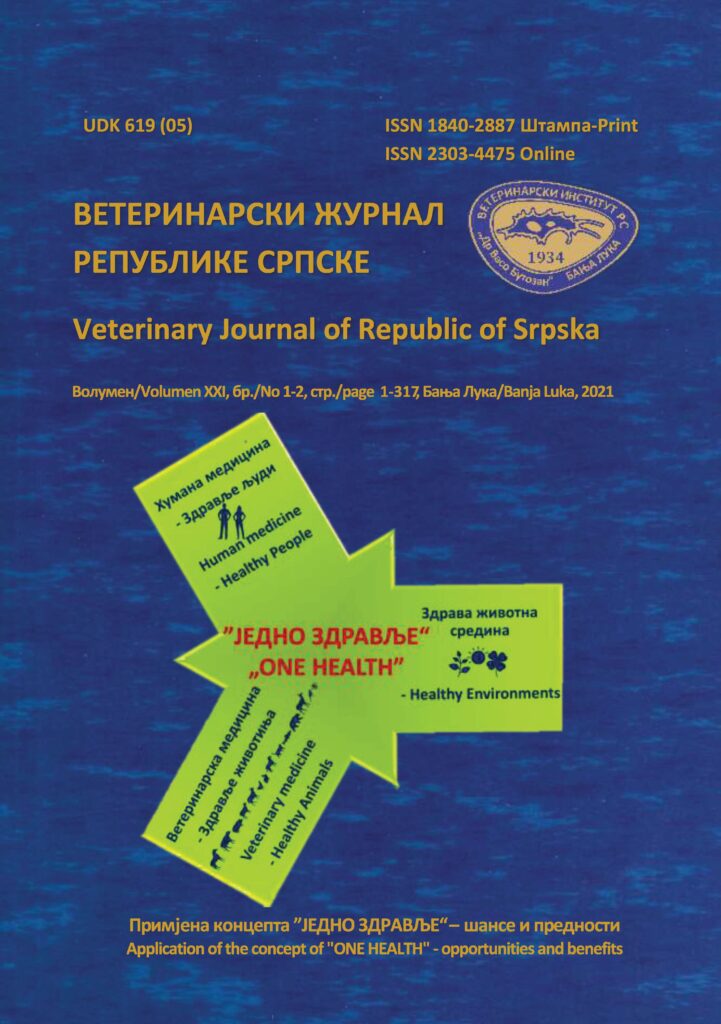COMPARISON OF ROE DEER (CAPREOLUS CAPREOLUS) AND SHEEP (OVIS ARIES) FEMUR MORPHOLOGICAL CHARACTERISTICS AS A METHOD OF DETERMINATION ANIMAL SPECIES
DOI:
https://doi.org/10.7251/VETJEN2101196NAbstract
Forensic analysis of the osteological characteristics of femurs of roe deer and sheep was performed by the method of comparison. In this study, 6 femurs of adult roe deer and 6 femurs of adult sheep were used. After the soft tissue remains were removed from the bones, they were boiled and then bleached in 3% the solution of hydrogen peroxide (H2O2). After bleaching, the bones were air-dried and then photographed. The roe deer femur is on average 2.3 cm longer than the same bone in sheep. The body of roe deer femur is strongly curved cranially, and in sheep it is slightly curved. The caudal surface of the femur body in sheep has two rough lines that were absent in the middle third in roe deer femoral body. The supracondylar fossa in roe deer is deep and in sheep shallow. The deep fovea in roe deer and shallow fovea in sheep were observed on the middle of the femoral head. The greater trochanter in roe deer femur is higher and narrower in comparison to sheep. The lateral surface of the greater trochanter of femur in roe deer is rough and in sheep it is smooth. The trochanteric fossa in roe deer femur is narrow and deep, while in sheep it is wide and shallow. On the distal extremity of the femur, the trochlea in roe deer is shallower than in sheep. On the lateral condyle, the popliteal muscular fossa in roe deer is narrow and shallow and in sheep wide and deep. The roe deer patella is on average 0.3 cm shorter and 0.4 cm narrower compared to sheep.

